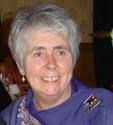
The life of the monk is very different from the one that most of us live – ruled by our diaries and clocks, never enough time to get through all that we want to put into our days, rushing from one thing to the other, no time to think or be still. We can be so caught up in the practicalities of everyday life that we forget there is a deeper dimension to life. We are too busy and fill our day with noise so as to distract ourselves from any kind of unpleasantness or pain. But as the poet said “what is this life if full of care we have no time to stand and stare”. In our busyness we can become blind to the beauty of the world in which we live, the goodness and pain that surrounds us, the depth of our own insecurities and fears. We can live at a surface level, scared to look too closely at ourselves or hear our own inner conflicts. Silence can be threatening. The first time I did the Time for Reflection at the Scottish Parliament I wanted to include half a minute or so of silence but was warned by the Presiding Officer that the Parliamentarians did not like silence.
What the programmes on the three monasteries did was show another dimension of life, a pace of life that is steady, reflective and committed to prayer. It might sound rather selfish and idealistic but it’s not. I don’t live in a monastery but know enough of community living to realise the challenges that it can pose with the opportunities for personal character building. I know enough of silent meditation to know that it can bring peace and comfort but also struggle as we honestly face up to the shadow side of ourselves, being open to healing and transformation. I know enough of monastics to know that their commitment is to the healing of the nations and the world in which we all live. Their life and their energy is a power that is for the good of all.
Christian monastics as well as Buddhist monastics (and of course practising Muslims) come together several times a day to pray regularly for the world in which we all live. In Christian monasteries this can be five or seven times a day and I often think there’s an energy there we could all draw on. We know from our faiths and from science how closely everything is related, that our energies are connected. When life is difficult, when we are down and overwhelmed by anxiety or sadness, there is a constant stream of prayer that we could imagine taking into ourselves to strengthen and support us. And it’s not necessary to believe in God to do this. All we need to believe is that our energies are interconnected, that we can send out good energies and thoughts into our world and it will be affected by them; that we can open ourselves to that good energy which is constant in our world even if unseen.
It so happens that this past week I have been on retreat- not in a monastery but by myself, in a little house close to the sea. There was plenty of time to stop, free myself from e-mails and phone calls, be silent, rest, walk, read, reflect, meditate. My companion was a book by Judy Cannato, a spiritual writer who tragically died five or six years ago. Her interest lay in quantum physics, in the new science which is offering us what she called the Story of the Universe, a story that tells of our unfolding evolution to this moment of consciousness. The book, entitled ‘Field of Compassion’, uses the idea of the biologist Rupert Sheldrake who speaks about morphogenic fields – a field of energy that surrounds all living organisms – much like magnetic fields – and holds inherited memories, connects and draws us together with those who inhabit our particular morphogenic field. There is a resonance, a relatedness between different species and as human beings we can be conscious of this in a way other species might not be. As Cannato says “the human person is a field of energy and information rooted in the body but extending out from the body, interacting with the energy and information of others. None of us is a discreet, separate unit but an integrated system of interactions and relationships connected to all”.
So taking in the energy of others and sharing our energy with others is not just a spiritual reality. It’s also a scientific one. However energy can be good or bad. As the song says it’s not so much what we do as the way that we do it that matters. It’s good for us to be aware of this. It’s good for us to try to develop within ourselves compassion and justice to make sure that our field of energy is indeed a field of compassion. Uniting with others, it’s not hard to imagine what a difference that would make to our world.


 RSS Feed
RSS Feed
